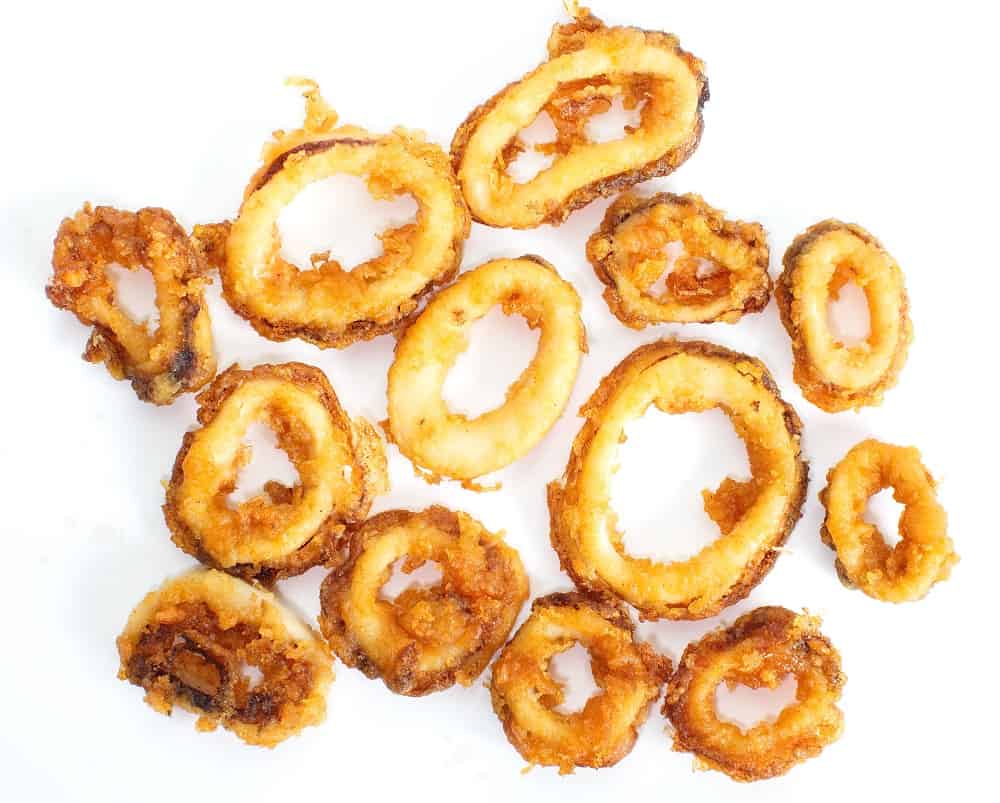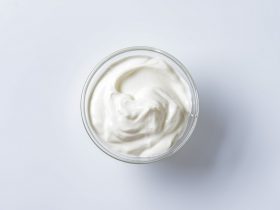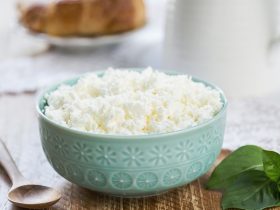Pregnant women have to deal with a lot of do’s and don’ts, including about what to eat. Food safety is most especially a concern during pregnancy as hormonal changes in a pregnant mother weaken immune function, making her more vulnerable to food-borne diseases. Likewise, the unborn fetus is vulnerable to the same diseases because their immune system has not yet developed.
The good news is that calamari is one of the seafood choices that can be eaten by pregnant women. It is a dish that uses battered then deep-fried squid; It is considered safe during pregnancy as long as it is properly cooked.
Is Calamari Safe to Eat While Pregnant?

The 2015-2020 Dietary Guidelines for Americans recommends consumption of a variety of seafood from 8 to 12 ounces per week, from sources that are low in mercury, for all pregnant and breastfeeding women. Squid is one of the “best choices” in their list of seafood to eat, and can be safely consumed for up to 2 to 3 servings per week.
Octopus is also part of the cephalopod family and is also deemed safe for consumption.
Jesmarie Macapagal
Squid has low mercury content, hence it is a safe choice for pregnant women. In contrast, seafood that has high mercury content should be avoided during pregnancy. This includes king mackerel, tilefish, shark, swordfish, bigeye tuna, marlin, and orange roughy.
However, remember to cook squid properly before eating to avoid any food-borne disease. Squid can be cooked by frying, sautéing, grilling or baking. Any of these ways to prepare squid are acceptable during pregnancy.
Searing squid, however, should be avoided. The inside might remain raw and only the outside of the squid might cook. Squid can also be eaten raw as part of uncooked sushi, and likewise should be avoided by pregnant women.
Seafood should be cooked thoroughly until an internal temperature of 145oF (or 62.8oC) is achieved. Any leftovers should be kept in the refrigerator to avoid harmful bacteria from growing when food is left for too long at room temperature.
Calamari is typically battered and then deep-fried, hence there should not be any problem. Other seafood with low mercury content can also be safely consumed during pregnancy, including scallops, shrimp, clams and oysters. Still, these should be cooked properly and thoroughly before being eaten.
Read More: Is Clam Chowder Safe During Pregnancy?
Benefits of Fish and Seafood Consumption
Fish consumption during pregnancy is known to improve both maternal health and fetal development. Seafood is a source of key nutrients for optimal fetal and infant neurodevelopment. These include vitamin B12, vitamin D, iodine, iron, manganese, zinc, and polyunsaturated omega-3 and omega-6 fatty acids. Pregnant women can achieve optimal amounts of these nutrients by oral consumption of seafood (Hibbeln et al., 2019).
Worldwide, there has been increasing evidence that exposure to omega-3 long chain polyunsaturated fatty acids (PUFA) from consumption of seafood is associated with numerous health benefits. Eicosapentaenoic acid (EPA), docosapentaenoic acid (DPA) and docosahexaenoic acid (DHA) are the most important omega-3 long chain PUFA.
A study by Brantsaeter et al. in 2017 assessed whether omega-3 PUFA in seafood could lower the risk of preterm delivery. Their data consisted of over sixty seven thousand pregnant women from Norway. Results showed that any seafood intake above “no, or rare, consumption” was associated with lower incidence of preterm birth.
DHA has been specifically recognized for its benefits during pregnancy and lactation. The European Consensus statement, as well as the World Health Organization guidelines, recommend intake of 200 mg of DHA per day for all pregnant women. Meanwhile, the International Society for the Study of Fatty Acids and Lipids (ISSFAL) recommends 300 mg of DHA per day for all pregnant and lactating women (Fayet-moore et al., 2015).
Hibbeln et al. (2019) reviewed 44 researches about seafood consumption and its effects on pregnant women and their children. Included in the review were more than a hundred thousand mother-offspring pairs, as well as more than twenty five thousand children. The authors came up with these conclusions:
- “There is moderate and consistent evidence indicating that consumption of a wide range of amounts and types of commercially available seafood during pregnancy is associated with improved neurocognitive development of offspring as compared to eating no seafood.”
- “Overall, benefits to neurocognitive development began at the lowest amounts of seafood consumed (~4 oz per week) and continued through the highest amounts, above 12 oz per week, some range up to >100 oz per wk.”
Prieto et al. in 2018 investigated the relationship between consumption of seafood during pregnancy and the risk of having a small for gestational age (SGA) baby. SGA was defined as birth weight below the 10th percentile of newborns for a specific gestational age. They made a case-control study including over five hundred pairs of women from five hospitals in Spain.
Intake of shellfish more than once a week was found to have a protective benefit against having an SGA infant. Likewise, an average intake of seafood of at least 29 grams per day (or 2 to 3 servings per week) was associated with reduced risk of an SGA newborn, compared with an average intake of seafood less than 8 grams per day (Prieto et al., 2018).
Read More: Is Crab Safe to Consume During Pregnancy?
All these findings emphasize the importance of, and give evidence to, current recommendations of including fish and seafood as part of a balanced diet during pregnancy.
Risks Associated with Seafood Consumption
Mercury has been considered among the top 10 chemicals of “major public health concern” by the World Health Organization (WHO). In humans, exposure to mercury occurs mostly through consumption of seafood. A number of researches have demonstrated the association between exposure to methyl mercury in utero with fetal developmental neurotoxicity among pregnant women who consume seafood regularly, including freshwater and marine varieties, shellfish and marine mammals (Sheehan et al., 2014).
Methyl mercury is considered a neurotoxin, and it is especially harmful to a developing fetal brain. Different types of seafood vary in their mercury content. Because seafood is also a source of the neuroprotective omega-3 PUFA, it is important to choose species that have low mercury content.
Raw or partially cooked seafood products may contain pathogens, parasites or bacteria that may increase risk of contracting food-borne illnesses. Therefore, immunocompromised persons, pregnant women, very young children and older adults should never eat raw or undercooked fish or seafood.
Final Thoughts
Seafood is part of a healthy, balanced diet for pregnant women. Several guidelines have recommended the inclusion of fish and all other types of seafood, including squid, for this purpose. Clearly, seafood is a source of nutrients that are beneficial both for the mother and her unborn child.
However, pregnant women should not forget that not all seafood is considered safe. Those with high mercury content should still be avoided, such as king mackerel, marlin, shark and bigeye tuna. Additionally, all seafood should be cooked thoroughly before consumption to lower the risk of contracting a food-borne illness.
Calamari is a safe and nutritious option for pregnant women. The process of deep frying the squid kills off potentially harmful pathogens. Thus, it can be enjoyed during pregnancy without any worries.
References
- https://www.fda.gov/food/consumers/advice-about-eating-fish
- Hibbeln, J., Spiller, P., Brenna, J. T., Golding, J., Holub, B., Harris, W., …, & Carlson, S. (2019). Relationships between seafood consumption during pregnancy and childhood and neurocognitive development: Two systematic reviews. Prostaglandins, Leukotrienes & Essential Fatty Acids 151, 14-36. doi: 10.1016/j.plefa.2019.10.002
- Prieto, C., Galiano, J. M., Bellido, I., Requena, R., Cavanillas, A., & Rodriguez, M. (2018). Maternal seafood intake and the risk of small for gestational age newborns: A case-control study in Spanish women. BMJ Open 8(8), e020424. doi: 10.1136/bmjopen-2017-020424
- Brantsaeter, A., Englund-Ogge, L., Haugen, M., Birgisdottir, B., Knutsen, H., Sengpiel, V., …, & Meltzer, H. (2017). Maternal intake of seafood and supplementary long chain n-3 poly-unsaturated fatty acids and preterm delivery. BMC Pregnancy and Childbirth 17, 41. doi: 10.1186/s12884-017-1225-8
- Fayet-Moore, F., Baghurst, K., Meyer, B. (2015). Four models including fish, seafood, red meat and enriched foods to achieve Australian dietary recommendations for n-3 LCPUFA for all life-stages. Nutrients 7(10), 8602-8614. doi: 10.3390/nu7105413
- Sheehan, M., Burke, T., Navas-Acien, A., Breysse, P., McGready, J., & Fox, M. (2014). Global methylmercury exposure from seafood consumption and risk of developmental neurotoxicity: A systematic review. Bulletin of the World Health Organization 92(4), 254-269F. doi: 10.2471/BLT.12.116152




